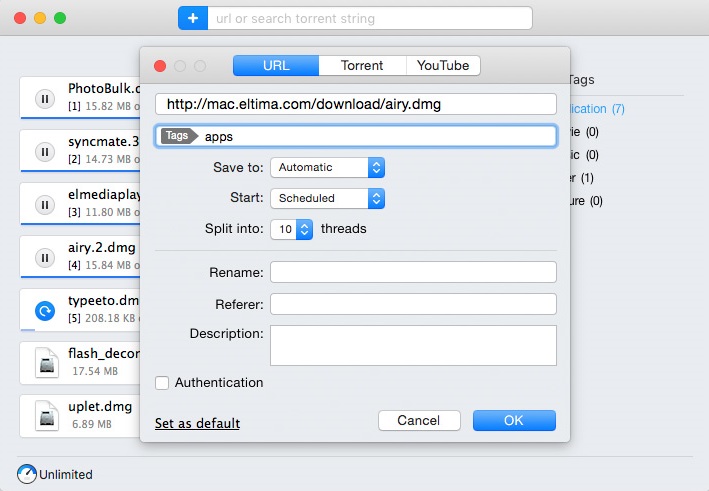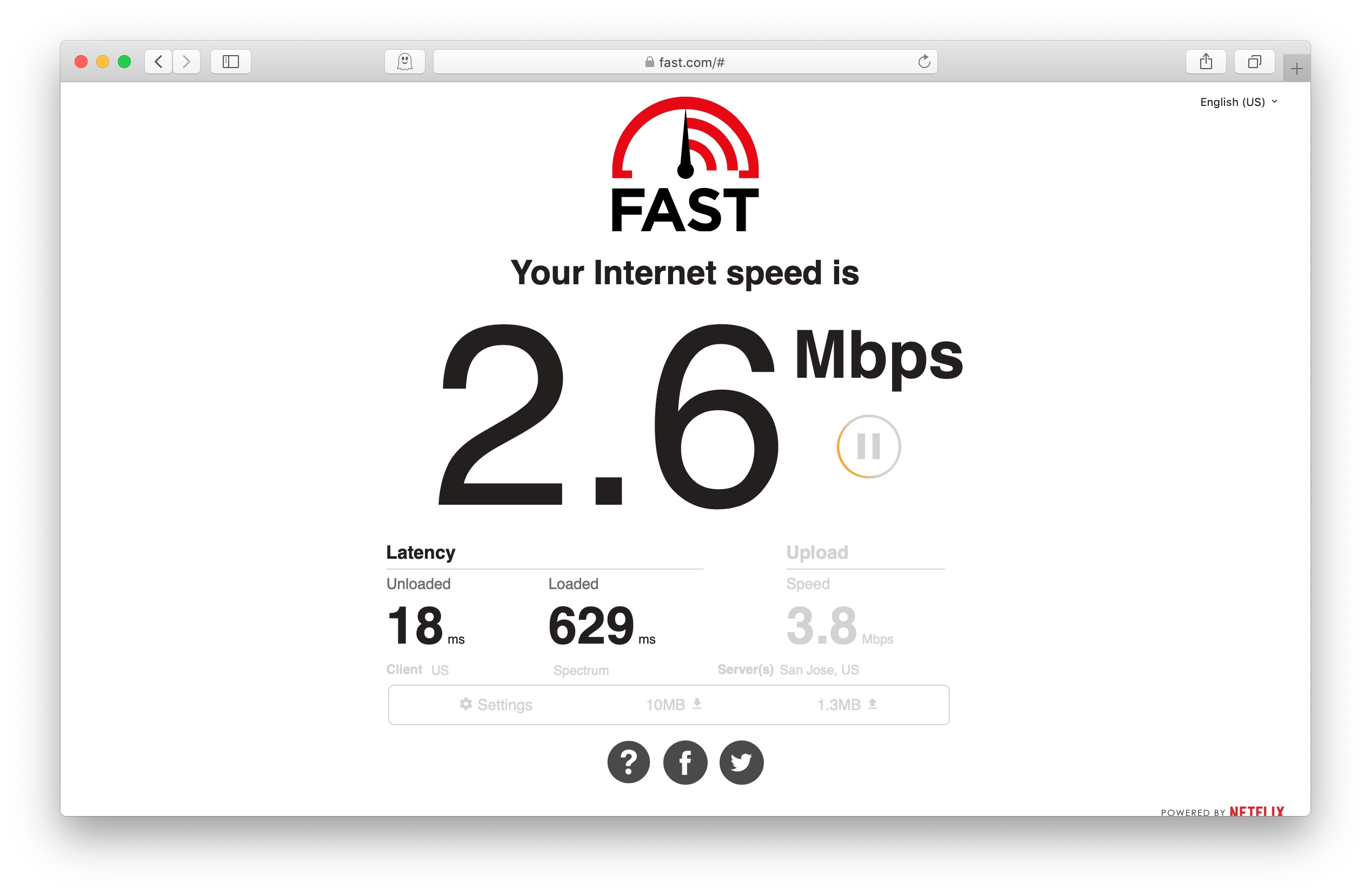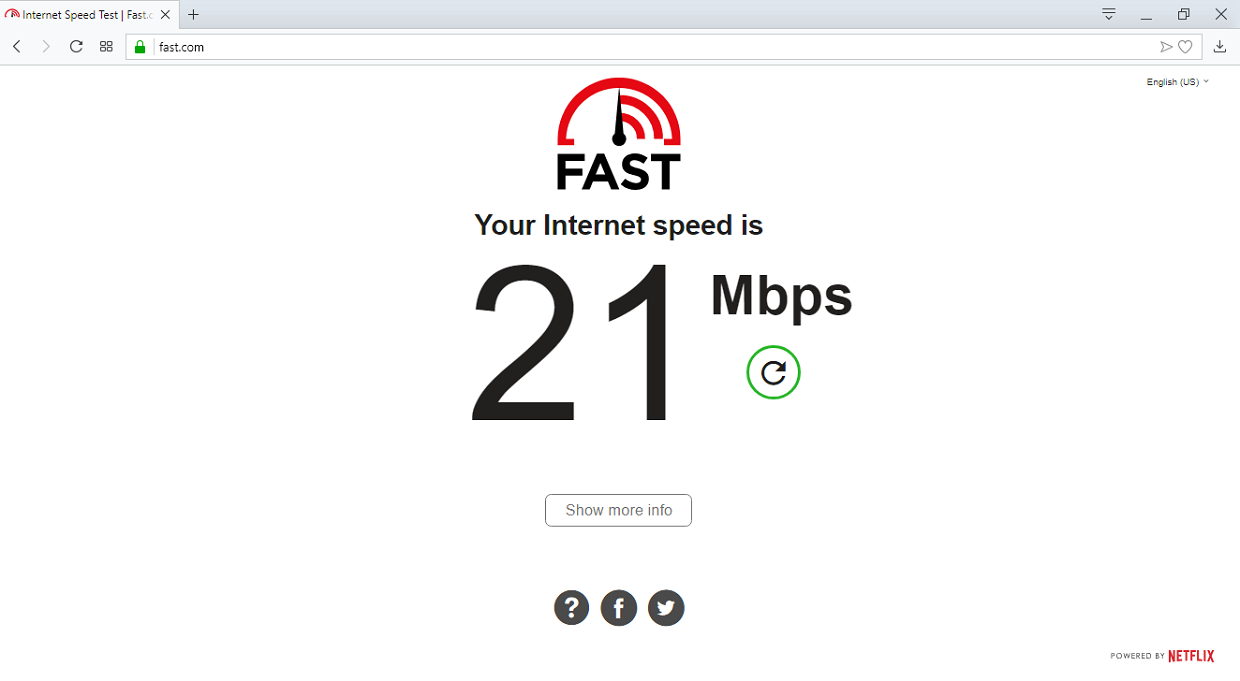Fix any Wi-Fi problem
How to speed up iMac, Mac Mini, Mac Pro. Shut down your computer. Unplug a power cord and wait 15 seconds. Plug the power cord in. Wait 5 seconds and press the power button. Resetting the PRAM to make Mac faster. Shut down your Mac. Press the power button. Press the Command+Option+P+R keys at the same time. Hold the keys until your Mac restarts. 2.3 How to Download Internet Speed Meter and Install for Mac Using Bluestacks. Bluestacks is great for its fast UI and high-end graphics.
CM Speed Booster is a free cleaner tool developed by Cheetah Mobile the creators of CM Security. With CM Speed Booster you will be able to boost your. Don’t accept slow performance! Clean up and speed up your devices for free with Avira System Speedup for Windows, and Optimizer for macOS and Android.
There are few things more frustrating than an internet connection that’s very slow. Thankfully, there’s a great deal you can do to troubleshoot the problem and speed up your connection. Here’s how to do it.
Why is my download speed so slow?
Internet speed is measured by how much data per second can be downloaded and uploaded. It totally depends on your Internet use, but the processes like uploading large files and video conferencing require decent speed.
Tools for instant downloads
Get a set of superb Mac apps that help you download faster. Best utilities in one pack, give it a try!
So what is a fast download speed? Normally, anything that’s above 100 Mbps is considered good Internet. This means, your Mac will handle multiple simultaneous online activities without major interruptions. Still, there’s no limit to perfection. If you want to reach the optimal speed to make downloads faster, there are a couple of things you can try.
First, you need to find out whether the slow download speed is due to your broadband connection or your wireless network. Since your wireless network is the bit over which you have control, you should check that first. In any case, optimizing and fine tuning your home or office wifi will improve performance.
How to increase Internet speed
Firstly, look at where your router is situated. Ideally, it should be in the centre of your house, so that every room gets a good signal. It should be away from walls, the floor and the ceiling as much as possible. And keep it away from metal furniture, which will reflect radio waves rather than allow them to pass through. Modern routers support both 5GHz and 2.4GHz networks. The latter allows for faster speeds, but the former suffers from less interference from other devices like microwave ovens and cordless telephones. So connect to the 5GHz network on devices that support it. If you have devices that only support 2.4GHz, place your router away from appliances like a microwave or cordless phone.
Here are a few simple steps you can take to improve your Internet speed:
Analyze your Internet speed. For a quick check of current speed, find and access Network Utility via Spotlight. Select your WiFi connection under the Info tab, and check Link Speed. The tools like NetSpot ot WiFi Explorer will help you automate WiFi monitoring as well as track factors that impact Internet speed.
Replace old cables. Ensure all your cables are in good condition. Clean dusty cables, replace those that are too loose or damaged, and double check whether the cables you use fit your network environment.
Optimize your router/ISP’s settings. Check the current setup of your router and tweak DNS settings if necessary. Unfortunately, ISPs don’t always come with the DNS configs that perfectly match your environment.
Scan your Mac for viruses. Sometimes, malicious programs and files on your computer can be the reason of poor Internet speed. Open CleanMyMac X > Malware Removal and the app will automatically make your Mac clean.
Regularly update software and firmware. Access Software Update via the Apple menu and see whether you might have missed a macOS update. Outdated OS as well as installing the beta versions of the new macOS may hinder the quality of your Internet. If the operating system is fine, check for the new versions of your router’s firmware.
Eliminate on-system interference. Make sure there are no “heavy” programs like virus scanners on your Mac — they may interfere with network performance.
Check your filters. Low-quality filters are another source of damage for your WiFi infrastructure, so you might need to replace them.
Fix external interference. The position of your router determines the Internet speed you get, especially if other devices located in your building rely on the same WiFi channel. We recommend to use NetSpot, an app for interference monitoring that shows you where to position a router.
Use a cable. We know, it feels like a tip from the 90s, but WiFi is actually always a bit slower than the Internet you get when you plug in directly to the modem.
Get a new modem. Very often, that’s the only fix that can help. Check with your ISP or test other providers to see whether you can get some extra speed.
And yes, don’t do any of the above until you try a restart. Power cycling — which is turning off and on your modem — is what you should begin with. Sometimes, there’s no particular reason your Internet is slow. It’s just your modem needing a fresh start.
How to get better Internet speed
When you’re satisfied with your router and it’s in the best possible location, time to analyze your wireless network. The following solutions will not only help you run a speed test, but also understand how to improve Internet speed.
NetSpot will produce a full analysis of all the wifi networks within range of your home or office and highlight any problems. It produces a heat map of your home or office and highlights ‘dead spots’ where wifi signal strength is low or non-existent. It can also advise on the best placement for your wifi router, and really useful suggestions to troubleshoot your networks.
WiFi Explorer allows you to identify conflicts with other networks, identifies signal overlaps, and provides a graph of signal to noise ratio. By maximizing the signal v noise, you can improve signal performance and speed up downloads.
One possible cause of poor wifi performance is interference from other wifi networks in your street. WiFi Explorer and NetSpot analyze how fast Internet is by analyzing those networks and let you know if they are causing a problem.
If there are lots of routers in your neighbourhood using the 40MHz spectrum, known as wide band, it can cause congestion – wide band occupies seven channels, compared with five used by 20MHz networks.In this case, switching to the 20MHz band may actually increase Internet speed by reducing interference. To do that you’ll need to access your router’s admin page in a web browser. You’ll need to consult its manual, or look for a sticker on the bottom of the router, for an IP address, username and password.
How to increase download speed on a slow internet connection
- Turn off bandwidth-hogging apps and plugins.
If you haven’t been able to improve the speed of your home broadband or wifi network, or if you’re on mobile network, you can still download faster. TripMode allows you to control which applications can download data. That means you can reserve bandwidth for apps you want to use to download and therefore download faster. - Split the downloads in threads to maximize download speed.
To splitting the downloads in threads try to use Folx, one of the most popular download managers for macOS. It has features for downloading movies, archives, or big files that allows you to split downloads into separate streams enabling faster downloads. - Schedule downloads.
One way to speed up downloads is to schedule them for a time when your ISPs network is less busy. Peak times are usually early evening through to around midnight, so use Folx to schedule downloads for the early hours of the morning. Some ISPs also throttle bandwidth for some users during peak hours, so downloading when it’s less busy is a very good idea.
How to download torrents faster
Despite the negative publicity BitTorrent has had in recent years, there’s nothing illegal in using it or in downloading torrents. As long as the content you download isn’t protected by copyright or, if it is, you have permission from the rights owner to take it, you’ll be fine. What’s more, it’s totally safe to use selected third-party tools to increase upload speed on torrent.
Additionally to Folx download manager it is also a torrent client. It has several features to make torrent download faster.
- Check seeds and peers.
Folx has its own built-in torrent search engine, so you don’t need to use a web browser. When you search for torrents in Folx, it will display the number of available seeds for each result. The more seeds, the faster the download is likely to be, so choose a torrent with lots of seeds. - Limit upload speeds and speed up torrent downloads.
Torrent clients upload files as well as download them and so the bandwidth available for a torrent client like Folx is used for both. If you limit upload speeds, you can make download speeds faster. You can also limit download speeds for browsers on your Mac, making more bandwidth available for torrents. To limit upload and download speeds, open Preferences in Folx and click on the Smart Speed tab. Of course, if you want to improve upload speed, you can limit download speeds instead. - Check port number.
Many torrent clients use port numbers 6881-6889. ISPs know this and some of them throttle bandwidth to those ports, which can make download speeds slow. In Folx Preferences, in the Torrents tab, check the port number and make sure its outside that range. If the port is showing as ‘in use’ click ‘Randomize port’ to choose another. - Prioritize downloads.
If there’s one download you want more than the others that are downloading at the same time, right click on the other downloads and use the ‘Limit Speed’ option to cap their download bandwidth and increase torrent download speed for your file.
How to speed up Chrome downloads

There are a number of things you can do to boost up Google Chrome’s speed:
- Limit Extensions. Browser extensions can be very useful but they eat up memory and can be reason of getting slow download speed on browser.
- Don’t have lots of tabs open. Web pages in tabs use resources like memory and, if they auto-load, bandwidth too. Keeping tabs to a minimum will speed up your browser.
- Use a download manager extension. Folx has a smart browser extension that allows it to handle everything you download in Chrome, Safari, Firefox, or any other browser. Using that can speed things up because Folx has features, like splitting files into streams, that are designed to make things faster.
- Avoid noname extensions that promise faster downloading
There are lots of Chrome extensions that promise to make the browser download faster. However, many of them don't work and causes Chrome run more slowly, don’t download the complete file, or, worse, are infected with malware. So, they are best avoided.
Downie does a similar job, even allowing you to down; pad 4K-resolution videos from streaming video and social media sites. Just copy and paste the URL for the video page into Downie or use its browser extension. Once you’ve downloaded the video, you can use Permute to convert it to any format you want.
If all else fails, check with your broadband provider
- Check whether your broadband provider has a fault
- Check whether wired instead of wireless can improve speed
Check that your broadband provider hasn’t reported a fault in your area by calling its helpline number.
Once you’ve ruled that out you need to find out whether the problem is your wireless network or is caused by your router failing to connect to the broadband network. If you have a Mac that has an Ethernet port or you have a USB to Ethernet adapter, connect it directly to an Ethernet port on your router to try speed up your Internet. If your download speed is much faster when connected by Ethernet, your wireless network may be the culprit.
Fortunately, there are lots of things you can do to troubleshoot and improve the speed of your wifi network.
This is why your upload speed can be faster than your download speed.
You’ll learn:

- The technical details of why your upload speed is faster than your download speed
- How to fix your download speed
- Lots more

So if you want to understand why your upload speed is faster than your download speed and how to fix it, then this article is for you.
Let’s jump right in!
Table of Contents
Why Is My Upload Speed Faster Than My Download?
We’ve arrived at a point where a good Internet connection is a must.
It used to be that only gamers and avid movie fans were sticklers for high internet speeds.
Today, both our kids and our parents will instantly notice when the Wi-Fi is lagging, and the YouTube video won’t buffer.
When you do an internet speed test to see if your speeds live up to your provider’s promise, you might notice that your upload speed is faster than the download.
While that doesn’t have to be a big problem, it might be a sign of something you need to fix.
Let’s learn more about internet speeds and fixing this potential problem:
Internet Speeds Explained: What Is a Good Speed?
Your internet speed signifies how fast data moves from the World Wide Web to your devices and vice-versa. It’s measured in Mbps (Megabits per Second), and it can depend on a lot of factors.
Apart from the package you get from your provider, your home’s internet speed can be affected by everything from the type of your connection (wireless or Ethernet) to your devices’ specs.
So, how do we define a good internet speed?
That will largely depend on what you’re using the internet for. Streaming (especially live streaming) will require good speeds.
Still, basic tasks like browsing or email correspondence will need much lower speeds. This means that a 5 Mbps connection can be both slow (if you’re planning on using it for streaming) and fast (if all you’re doing is browsing).
Here is a guide from the FCC detailing the minimum download speed requirements for different activities.
Note that these are the minimum requirements, so they go up to 25 Mbps. That’s because anything above 25 Mbps is considered an “advanced” service:
However, in practice, 25 Mbps speeds are fairly common. With recent innovations in the 5G field, these download speeds will soon be considered low to moderate.
Download Speed vs. Upload Speed
Download speed is usually considered more important than upload. Most of our online activities rely on consuming or receiving content rather than uploading.
So, your download speed doesn’t only refer to how quickly you can download files. It’s also about how quickly your YouTube video loads, what resolution you can watch, and how fast website pages load.
Essentially, everything that needs to be loaded, downloaded, and consumed in any other way will rely on your download speed.
While download speed tells you how fast you receive data from the Web, upload speeds tell us how quickly the data moves in the opposite direction.
You might think that your upload speed is only essential for uploading and sending larger files, but it’s much more than that.
Your video and audio calls, streaming, and other activities to output any type of content online will all be affected by your upload speed.

These two speeds work together to give you the best browsing experience in receiving content and interacting with it. When it comes specifically to gaming, one more variable plays a crucial part: ping.
Simply put, ping refers to the reaction of your connection or how quickly the application (in this case, the game) can execute your command.
Ping below 20 milliseconds is considered very good. Anything above 40ms might result in laggy, delayed gameplay.
Is It Normal for Upload Speeds to Be Faster Than Download?
Since we spend so much of our time downloading data from the internet, download speeds are usually required to be a lot faster than upload speeds.
So, it’s pretty expected to execute a speed test and see that your download speeds are orders of magnitude larger than upload.
However, many providers sell services that promise 50/50 or 100/100 connections, which means that you’ll have 100Mbps for both your download and upload speed.
And, since networks can be congested (if a lot of people are online simultaneously), you might get a different result in practice.
For example, now that many people are working from home, you might find that your 100/100 internet is actually closer to 81/90 in reality.
Apart from something like this, your download speed will almost always be faster than upload. If it’s the other way around and the gap is significant, there are some other possible explanations.
Why Is Your Upload Speed Faster Than Download?
How To Get Faster Download Speed On Mac
As already mentioned, your Internet speed is affected by almost anything in the chain, from your ISP (Internet Service Provider) infrastructure to the device you’re using and other devices in your home that might be using the same signal.
Here are some basic troubleshooting steps you need to take to get to the bottom of the issue:
- Reset the router/modem/device: It may well be that you’re having a software issue with your router, modem, or PC/laptop/smartphone. Resetting any of these devices is often the first step you need to take to see if the problem is real and long-term rather than just a bug.
- Try different devices: If your laptop shows low internet speeds, connect another laptop/PC from your household on the same connection. This will help you whether the problem is your device or your connection.
- Call your provider: If none of the things above tell you what the problem is, you might want to call your provider instantly. They might tell you that they’re aware of the problem and it’s affecting your whole region. In a lot of cases, they’ll be able to solve your issue in a few hours.
Identifying Your Issue and Finding a Solution
If you want to solve the issue on your own, here are some routes you can take:
Issues With Your PC
There are several issues with your PC that could be holding your internet speed back.
You can start by disabling and enabling your network adapter. Go to your Control Panel, select network and internet, and then Change Adapter Settings.
A new window will open, showing all your available connections. Choose the one you’re having issues with (Wi-Fi or Ethernet), right-click on it, and select “Disable.”
Restart your PC, come back to the same place, and select “Enable” to see if your problem has been solved.
You could also try to uninstall your network adapter driver. But, before deciding to do this, visit your PC manufacturer’s website and download the latest network adapter driver to have it as a backup.
To do this:
- Go to the Device Manager (type it in your search bar and hit Enter).
- Find the Network Adapters and expand the section.
- Find the network adapter for your device, right-click on it, and select “uninstall device.”
- Check the “Delete the driver software for this device” box and wait until it’s uninstalled.
- Restart your computer.
How To Increase Download Speed Mac
Your PC should automatically find and install the latest driver. If it doesn’t, you can install the one you downloaded as a backup.
Issues With Your Router
There might be some software or hardware issues with your router. Reset the router and see if that fixes your problem. If it doesn’t, access your router settings to try and change some things around.
To access your router, you’ll need to find its IP address. It’s usually 192.168.1.1. or 192.168.0.1, so try both of these.
Open a new tab in your browser, type in one of these numbers, and hit Enter. If nothing happens, you’ll need to find your router address manually.
Type “command prompt” in your search bar and hit Enter.
When the Command Prompt opens, enter “ipconfig” and hit Enter.
You’ll see a bunch of letters and numbers, but the only thing you’re looking for is the “Default Gateway.”
Right next to that, you’ll see your router’s IP address. Type that address into your browser, hit Enter, and you’ll see your router login page.
Check the back of your router or the box it came in to see your username and password. Enter those in the required fields, and you’re in!
Internet Download Manager For Mac
From there, you can access various settings that have something to do with your internet connection.
Mac Download Speed Slow
For example, one issue that could affect your download speed is the WMM (Wi-Fi Multimedia) Support: a feature that prioritizes “time-dependent” traffic like video chat. Disabling this setting could help increase your download speeds.
In your router settings, find a page/tab called “QoS.” This stands for Quality of Service, and it’ll usually be nested under something like “Advanced settings,” “Traffic control,” “Applications and Gaming,” or something similar.
There, you might see the “Enable WMM” setting you’re looking for. Turn it off and see if it solved your problem.
Issues With Your Cable
Believe it or not, the solution to your problem might be as simple as trying a different Ethernet cable.
Your Ethernet connection is duplex: it receives and transmits simultaneously using different wires and pins for receiving and transmitting. It might be that your receiving wires or pins on the connector are having issues while the transmitting ones are working fine.
Try changing your cable if you’re experiencing these issues.
Issues With Your Provider
Finally, your Internet Service Provider might be making a mistake in the way they deliver the service to your household.
Call them and express your concern—they might instantly see that they’re connecting too many people to the same network, causing you (and possibly many others) to experience issues with their download speed.
Do this, especially if your download speeds are consistently low on all devices and vary throughout the day.
Suppose you notice that your internet is particularly slow during internet “rush hour” (when most people finish with work or around 2 pm when everyone is awake and online).
In that case, this is a good indicator that the issue might be with your ISP.